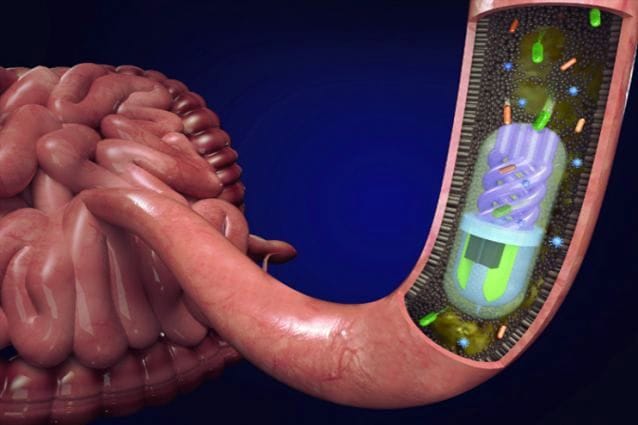![A 3D printed pill can sample the human microbiome. [Source: Tufts University]](https://fabbaloo.com/wp-content/uploads/2020/05/image-asset_img_5eb093429a496.jpg)
Researchers at Tufts University have developed an unusual 3D printed pill that can aid diagnoses.
The project was to create a swallowable device that could perform microbiome sampling of a patient’s digestive tract. This apparently has been successful, according to a report from Tufts University.
When I first read the headline describing this pill, I naturally assumed this would have to be some kind of robotic device that would power its way through the digestive tract, making decisions for movement and collecting samples intelligently along the way. To 3D print something resembling that vision is basically not possible with current technologies.
But it turns out that’s not at all how this pill is designed.
Instead of the complex, intelligent robot I envisioned, the researchers devised an essentially passive device to perform all of the above. I don’t believe it has any moving parts.
3D Printed Microscopic Channels
The key to their success was the use of high-precision 3D printing. The pill was designed with a series of different types of channels leading to its outer surface.
The channels were designed to collect only certain types of material. Some of this was due to the size of the channels, which might block larger objects to allow desired objects to enter, and others were done in a chemical manner.
For example, one channel included a calcium-salt chamber. This chemically attracted bacteria through an osmotic flow through a membrane. This allowed the pill to collect bacteria as it flowed.
I know what you’re thinking: how can you trigger the sampling process to begin at the appropriate point in the digestive tract? You don’t want to go to the trouble just to find samples from a ham sandwich being chewed.
Their solution was ingenious: coat the outer surface of the pill with a “pH sensitive coating” that would dissolve at the right moment in the digestive tract. After that the pill would begin passively collecting samples.
External Manipulation of 3D Printed Pill
The pill even included a magnet that would allow physicians to use an external magnet to guide the pill toward or remain around areas of particular interest. This is done entirely externally, with no surgery required.
Thus the pill would silently travel through the entire digestive system, collecting targeted samples along the way. Upon exit from the digestive tract, the pill would be collected, and that’s made even easier by including a fluorescent dye.
The pill’s collected samples can then be analyzed to determine more about the patient’s condition.
Passive 3D Print Design
What hit me about this project is in fact my own initial confusion about how this could be done. While I assumed you would have to build a fancy machine to do all this, it turns out you can design passive structures to perform the same work that an “active” machine could do.
This was not really possible before the advent of microscopic 3D printing, which allows an enormously wide set of possible structures that can perform arbitrary tasks in situations such as this.
Via Tufts University











A research thesis details the incredibly complex world of volumetric 3D printing. We review the highlights.